Right ascension 08 52 41.3 Redshift 411 ± 1 km/s Apparent size (V) 9′.3 × 2′.2 | Declination +33° 25′ 19″ Type SA(rs)b Magnitude 10.6 Apparent magnitude (V) 10.6 | |
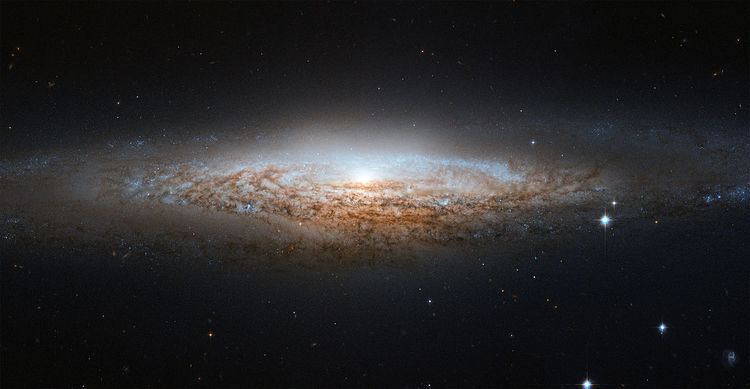 | ||
Distance 25 ± 4 Mly (7.7 ± 1.3 Mpc) Similar NGC 2903, NGC 2841, NGC 3184, NGC 3628, NGC 4631 | ||
Lynx rys ngc 2683 ufo galaxy
NGC 2683 is a field spiral galaxy discovered by William Herschel on February 5, 1788. It was nicknamed the "UFO Galaxy" by the Astronaut Memorial Planetarium and Observatory. It is viewed nearly edge-on from Earth's location in space and is located between 16 and 25 million light-years away. It is receding from Earth at 410 km/s (250 mi/s), and from the Galactic Center at 375 km/s (233 mi/s). The reddened light from the center of the galaxy appears yellowish due to the intervening gas and dust located within the outer arms of NGC 2683.
Contents
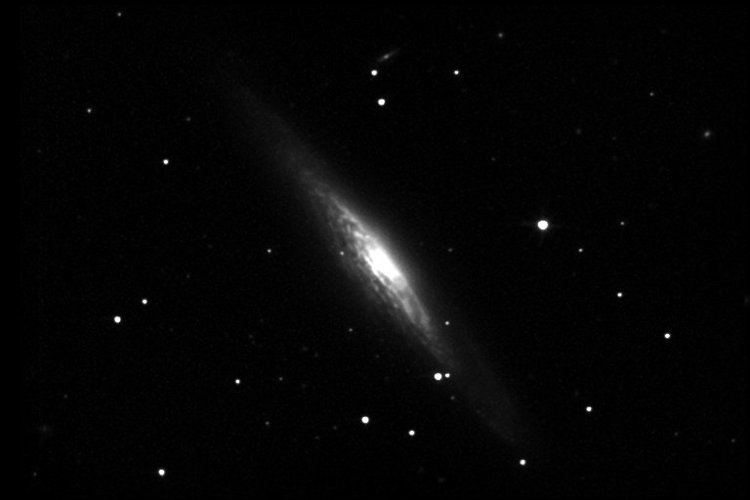
Characteristics
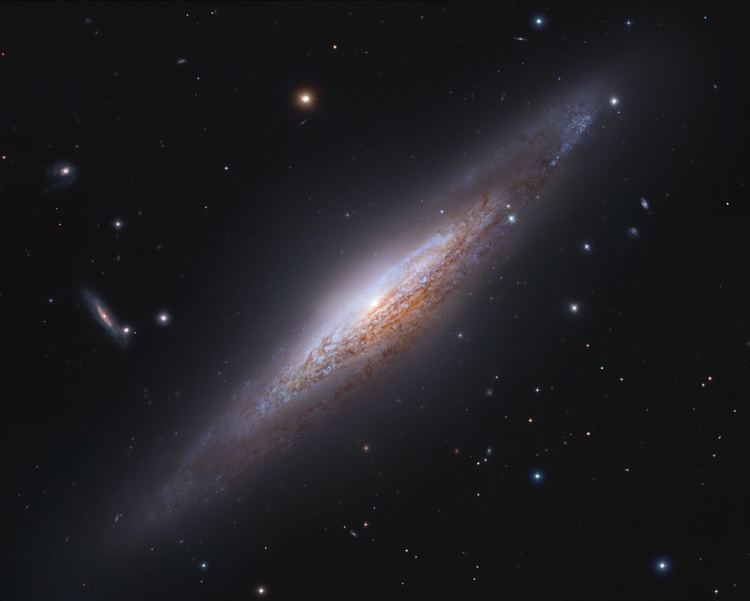
While usually considered an unbarred spiral galaxy, recent research suggests it may in fact be a barred spiral galaxy; its bar is hard to see due to its high inclination.
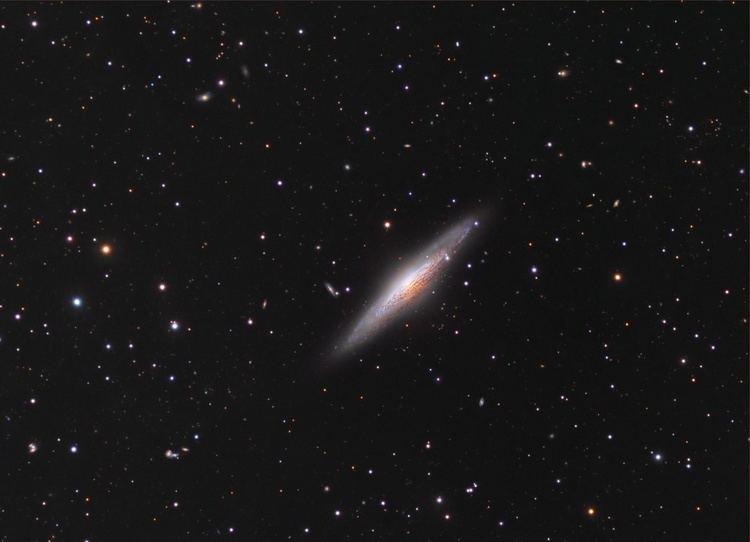
It is also both smaller and less luminous than the Milky Way with very little neutral hydrogen or molecular hydrogen and a low luminosity in the infrared, which suggests a currently low rate of star formation.
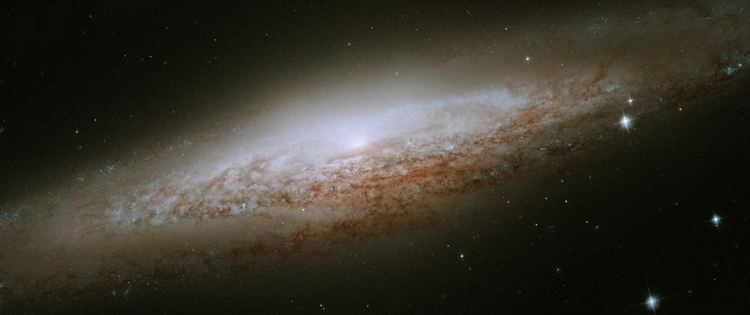
NGC 2683 is rich in globular clusters, hosting about 300 of them, twice the number found in the Milky Way.
